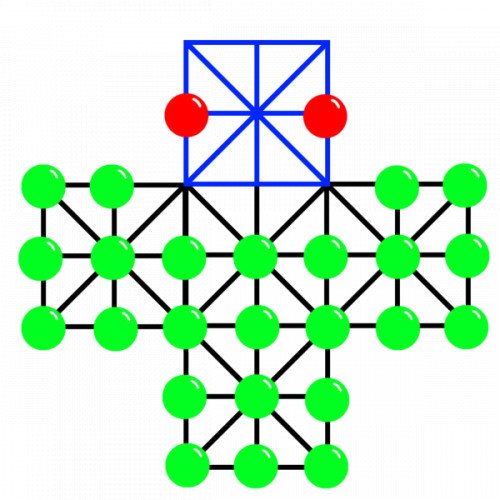ASALTO VS TWILIGHT STRUGGLE

ASALTO
Asalto, also known as the Assault Game, German Tactics or Officers and Sepoys, is a board game for two players in which one player, playing as the officers, attempts to defend a fortress from their opponent's invading rebels. The game is a variant on the Fox and Geese theme, and is commonly played in Germany, France, and England. Asalto is an asymmetric game in which the players take on two very different roles: the rebels and the officers. The rebels' objective is to capture the two officers, surround them so that they cannot move, or occupy all of the points within the "fortress". The officers' objective is to capture enough rebels that these tasks become impossible. Asalto is played on a grid of 33 intersection points in the shape of a cross, with a specially denoted arm known as the fortress at the top of the board. The total number of pieces in an Asalto game is 26, composed of 24 rebels and two officers. Before play begins, the rebels are arranged so that they sit on the 24 intersection points outside the fortress, while the officers may be arranged at the player's discretion inside the fortress. The game begins once the rebel player takes the first turn.
Statistics for this Xoptio

TWILIGHT STRUGGLE
Twilight Struggle: The Cold War, 1945–1989 is a board game for two players, published by GMT Games in 2005. Players are the United States and Soviet Union contesting each other's influence on the world map by using cards that correspond to historical events. The first game designed by Ananda Gupta and Jason Matthews, they intended it to be a quick-playing alternative to more complex card-driven wargames. It achieved critical acclaim for its well-integrated theme, accessibility and introduction of Eurogame elements. After being voted the number one game on BoardGameGeek from December 2010 to January 2016, it has been called "the best board game on the planet". Twilight Struggle is played competitively and was unofficially adapted for play-by-email and live online play. GMT released a Deluxe Edition in 2009, as well as a Collector's Edition as part of the crowdfunding campaign for the game's official adaptation into a video game; this Digital Edition was released in 2016. With over 100,000 copies sold, the game is GMT's all-time best-seller. According to its designers, "Twilight Struggle basically accepts all of the internal logic of the Cold War as true—even those parts of it that are demonstrably false." The game board thus presents a map of a bipolar world according to domino theory, where the US and USSR spread influence to all other countries (except China, which is shown as a powerful card, which must be handed to the other player if used, representing China tilting from one bloc to the other), and attempt to establish control depending on the stability of a country. One scholarly analysis proposed that "hile Twilight Struggle is at its core an area control game, what set its apart from being marked as a Risk clone is the combined effect of material aesthetics and design mechanics meant to embrace a particular point of view tied to the Cold War zeitgeist." Gameplay is divided into ten turns. Each turn players randomly draw a hand of event cards from a single deck. The starting deck contains only early war cards, with historically appropriate mid war and late war events shuffled in on turns 4 and 8 (for a total of 103 cards in the first edition). Players both use a card in the turn's headline phase (in which each player must play a card for its event) and six to eight action rounds.